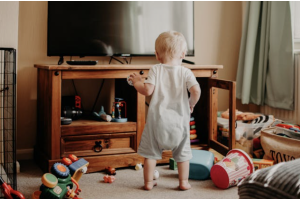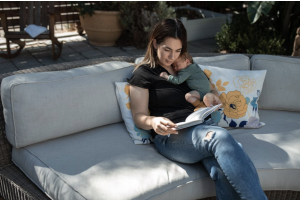How to Move Homes with a Dog

Moving to a new house suggests a lot of challenges for a dog. There may be a temporary or permanent change in their schedule. They no longer have the space they are most comfortable in. They may not know where to go to the bathroom, not to mention the unfamiliar sounds and scents permeating a new property they have never been to before. Here is how to move homes with a dog.
Use these tips and strategies to minimize discomfort and to help your dog adapt to their new environment.
Update Your Dog’s Microchip
Before you move, update your dog’s microchip to include your new address and contact details. If your dog has an ID tag, the same approach applies. This way, if your dog bolts, they will be far more likely to be returned to you.
Pack Dog Essentials
Create a dog essentials bag for move-day. Include dog food, water, toys, bedding, and feeding bowls.
Minimize Your Move Time
Don’t lock your dog in a vehicle or between houses for long. Create a timeline to minimize your move time.
Feed Your Dog
Buy your dog the best food you can. Brands like Open Farm dog food are highly recommended. When you move homes, ensure your dog is fed regularly and hydrated. This can help minimize unusual behaviours and aggression. It’s also a chance to observe how your dog eats, as stress can negatively impact eating habits.
Secure Your Pet
Any time you drive with your dog, secure them in a carrier, crate, or by using a dog seat belt. This prevents your dog from roaming in your vehicle while you drive and causing a distraction.
Don’t Forget Breaks
If your dog travels longer than 4 hours, they will need breaks. Stop for them to go to the bathroom, stretch their legs, and reduce the discomfort of extended car trips and travelling.
Inspect for Safety Hazards
Check your new home for hazards, such as exposed wire your dog may chew on, toxic plants in or surrounding your home, and any damage to fences, doors, windows, or flooring that could harm your pup.
Set Up a Calm Area While Unpacking
Give your dog a place to relax and rest while you unpack. Please set up a calm area with dog essentials to shield it from the people and noise involved in moving. This will minimize your dog’s exposure to stress.
Consistent Commands
Use commands to keep your dog calm. Be consistent with your tone and language. Reinforce positive behaviour and use many cues to keep your dog calm and content.
Be Ready for Trouble
Moving homes is an adjustment. Your dog is more likely to have accidents or be nervous during the transition. Be patient and supportive. Let your dog gain or regain the confidence it needs to adopt this new space.
Set Up Training Pee Pads
To be safe, consider using training pee pads when you first move in to minimize the risk of your furry friend having an accident in worse places indoors. It may take some time to prevent accidents in the home.
Stick to a Routine
Keep your dog’s move day and days to come predictable. Do not introduce new routines. Maintain a schedule of feeding, walks, and playtime. While moving, do what you can to avoid unsettling your pup.
Positive Associations
Avoid expressing negative emotions around your pup. Encourage positive associations with your new home. Please provide them with no shortage of treats, high-quality dog food, and playtime. Have fun with your dog everywhere throughout your new home.
Let Your Dog Adjust
Your dog should adjust to a new home at its own pace. Do not force interactions or exploration. Let your dog move on its own time. This is the best way to ensure a smooth transition into its new environment.
Pick a Bathroom Spot
Teach your dog where to go to the bathroom. If you intend to let them loose in the yard, give them a specific spot outdoors.
Provide a Quiet Sleep Space
Place your dog’s bed in a quiet area, such as in their crate. A dedicated sleep spot ensures restful nights. Keep their sleep area consistent. Please provide them with their usual blankets and toys. Make it feel like they’ve never left their previous home.
Schedule a Vet Visit
If you are moving to a new city, ensure you collect your dog’s medical record from their old vet and provide it to your new local veterinarian. They may also be able to help with certain strategies or medications to assist with the stress of moving.
Separation Anxiety
If your dog already has separation anxiety, it may worsen after you move homes because they will be somewhere unfamiliar to them. Medications and strategies to help your dog cope with separation anxiety may be worth looking into.






